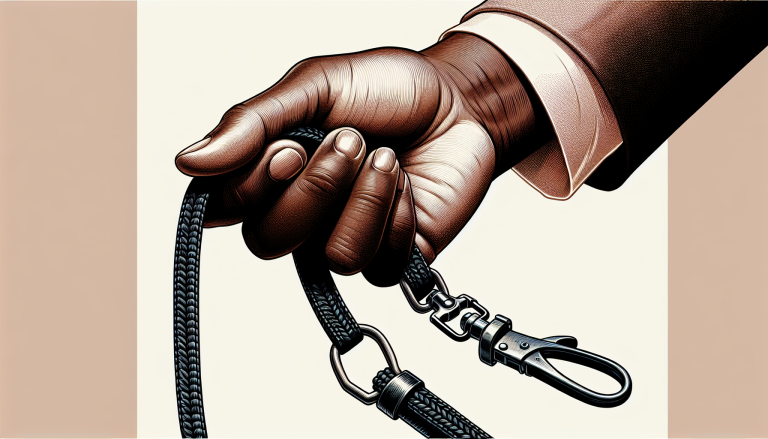So you think you’ve got your dog’s behavior all figured out? Think again! There are numerous common myths and misconceptions when it comes to understanding and training our furry friends. From the belief that dogs understand punishment to the idea that some breeds are innately aggressive, it’s time to debunk these myths and shed some light on the truth. In this article, we’ll explore the biggest myths about dog behavior and training, bringing you the facts that every dog owner needs to know. So grab a treat, sit back, and let’s debunk some myths together!
Table of Contents
TogglePositive reinforcement is not effective
Punishment is the only effective training technique
Contrary to popular belief, positive reinforcement is actually highly effective in dog training. Punishment-based techniques, on the other hand, have been proven to be less successful. When you use punishment to train your dog, you are teaching them what not to do rather than showing them the correct behavior. This can lead to confusion and anxiety in your furry friend. Positive reinforcement, on the other hand, involves rewarding your dog for good behavior. By consistently rewarding positive actions, you are reinforcing the behavior you want to see and encouraging your dog to repeat it.
Reward-based training does not work for all dogs
While positive reinforcement can be successful for most dogs, it is true that each dog is unique and may respond differently to various training techniques. Some dogs may require different types of rewards or may be more motivated by different stimuli. However, this does not mean that positive reinforcement is ineffective. It simply means that as a responsible dog owner, you need to understand your dog’s individual needs and tailor your training methods accordingly.
Positive reinforcement creates spoiled dogs
Another common misconception is that positive reinforcement leads to spoiled or undisciplined dogs. This stems from the mistaken belief that reward-based training means letting your dog get away with anything they want. In reality, positive reinforcement is all about setting clear boundaries and reinforcing good behavior. By consistently rewarding your dog for desired actions, you are teaching them manners and proper behavior. This does not create spoiled dogs; it creates well-behaved and happy companions.
Dominance theory is the key to training
Dogs need a dominant leader
The dominance theory suggests that dogs are pack animals and require a dominant leader or “alpha” figure. However, recent research in animal behavior has debunked this theory. Dogs are not wolves, and the dynamics in a domestic setting are vastly different from those in a wolf pack. While it is important for a dog to have a consistent and confident owner, this does not mean that dominance and force are necessary. Positive leadership based on trust and respect is much more effective in building a strong bond with your dog and establishing a harmonious relationship.
Using force and dominance-based techniques is the only way to establish control over a dog
Contrary to popular belief, force and dominance-based techniques are not the only way to gain control over your furry friend. In fact, using force can often lead to fear and aggression in dogs. Positive reinforcement-based training techniques, such as clicker training or luring with treats, have been proven to be just as effective, if not more so, in establishing control and teaching dogs desired behaviors. This positive approach builds trust and strengthens the bond between you and your dog, creating a cooperative and well-behaved companion.
Dominant dogs are more aggressive
It is a common misconception that dominant dogs are more aggressive. In reality, aggression is a complex behavior that can have various causes and triggers. Dominance is just one factor among many that can contribute to aggression in dogs. Aggression can stem from fear, lack of socialization, or even medical issues. The idea that dominance always leads to aggression oversimplifies the complex nature of canine behavior. It is important to understand that aggression is not solely determined by dominance and that a dog’s behavior should be evaluated on an individual basis.
Older dogs cannot be trained
You can’t teach an old dog new tricks
The saying “you can’t teach an old dog new tricks” is a common myth regarding older dogs and their ability to learn. However, this belief is simply not true. While it may take a bit more time and patience to train an older dog compared to a young puppy, older dogs are perfectly capable of learning and adapting to new behaviors. In fact, older dogs often have the advantage of being calmer and more focused, making them excellent candidates for training and behavior modification.
Older dogs are set in their ways and resistant to training
Another misconception surrounding older dogs is that they are set in their ways and resistant to training. While it is true that older dogs may have established habits and routines, this does not mean they cannot be trained to new behaviors. With patience, consistency, and positive reinforcement, older dogs can learn and adapt just as well as their younger counterparts. In fact, older dogs often appreciate the mental stimulation and engagement that training provides, making it an enjoyable experience for both them and their owners.
Older dogs are harder to train than puppies
Many people believe that older dogs are harder to train than puppies. While puppies may have a natural eagerness to learn, they also require a significant amount of time and effort to shape their behaviors. Older dogs, on the other hand, have already developed basic manners and often have a better attention span, which can make the training process more efficient. With the right approach, older dogs can quickly grasp new concepts and behaviors, making training a rewarding experience for both the dog and their owner.
Puppies will naturally outgrow bad behavior
Puppies will naturally grow out of chewing and biting
It is a common misconception that puppies will naturally outgrow behaviors such as chewing and biting as they mature. While it is true that puppies go through different developmental stages, it is important to actively address these behaviors through training and redirection. Chewing and biting are natural behaviors for puppies, but it is essential to teach them appropriate alternatives and provide them with appropriate chew toys to prevent destructive behavior.
Puppies will learn not to jump on people as they get older
Jumping on people is another behavior that many believe puppies will naturally outgrow. However, without proper training and guidance, this behavior can persist into adulthood. Teaching puppies alternative greetings, such as sitting or offering a paw, and consistently rewarding them for appropriate behavior will help them learn good manners and prevent them from jumping on people as they grow older.
Puppies will stop having accidents in the house over time
House-training is a crucial aspect of puppy training, and it requires consistency and patience. While it is true that puppies generally gain better bladder control as they mature, it is important to actively enforce good toilet habits and provide them with ample opportunities to relieve themselves outside. Through positive reinforcement and a consistent routine, puppies can quickly learn to eliminate outside and minimize accidents in the house.
Dogs understand punishment as a consequence for their actions
Dogs associate punishment with their behavior
One of the fundamental principles of dog training is that dogs associate consequences with their behavior. This means that if a dog receives punishment immediately after engaging in a specific behavior, they are more likely to understand that the behavior is undesirable. However, it is crucial to note that punishment should be used sparingly, as excessive or inconsistent punishment can lead to fear and anxiety in dogs.
Punishing a dog will teach them not to repeat the behavior
Punishment can be an effective tool in dog training when used appropriately. By delivering a consequence that the dog finds aversive, such as a verbal reprimand or time-out, immediately after an undesired behavior occurs, you can effectively discourage the dog from repeating that behavior. However, it is essential to balance punishment with positive reinforcement to ensure that your dog’s training experience remains positive and that they understand what is expected of them.
Physical punishment is necessary to correct a dog’s behavior
Contrary to what some may believe, physical punishment is not necessary to correct a dog’s behavior. Using physical force, such as hitting or physically restraining a dog, can lead to fear, aggression, and a breakdown of trust between you and your furry friend. Positive reinforcement-based training methods, which focus on rewarding desired behaviors instead of punishing undesired ones, have been proven to be just as effective, if not more so, in training dogs without causing unnecessary harm or stress.
All dogs should be trained the same way
Every dog requires the same training methods
While it is true that certain fundamentals of dog training apply universally, such as consistency and clear communication, it is important to recognize that each dog is an individual and may respond differently to various training methods. Factors such as breed, age, temperament, and previous experiences can all influence the most effective training approach for a specific dog. As a responsible dog owner, it is essential to assess your dog’s unique needs and adapt your training methods accordingly.
Training techniques that work for one breed will work for all breeds
Just as each dog is unique, different dog breeds have different temperaments, abilities, and tendencies. While certain training techniques may be successful with one breed, they may not be as effective for another. It is important to consider the specific characteristics and traits of your dog’s breed and tailor your training methods accordingly. For example, herding breeds may benefit from more mental stimulation and task-oriented training, while sporting breeds may thrive on physical exercise and interactive play.
One-size-fits-all training programs are effective for all dogs
While there are many excellent training programs available, no one-size-fits-all program will be effective for every dog. Each dog has their own unique needs and learning style, and a personalized training approach will yield the best results. A good training program should be adaptable and flexible, taking into account your dog’s individual strengths, weaknesses, and motivations. By tailoring your training methods to your dog’s specific needs, you can ensure a more successful and fulfilling training experience.
Dogs should be alpha or pack leader in the household
Dogs need to be dominant over their human family members
The idea that dogs need to be dominant over their human family members is a common misconception rooted in outdated dominance theory. Dogs are social animals that thrive on structure and consistency. Rather than viewing your dog as a dominant force, it is more important to establish a strong leadership role based on trust, respect, and clear communication. By providing guidance and setting boundaries, you can create a harmonious relationship where your dog feels safe and secure.
The owner must assert dominance over the dog to gain respect
Gaining your dog’s respect and trust does not require assertive dominance or physical force. Dogs respond best to positive leadership based on consistent rules, boundaries, and rewards. By using positive reinforcement and reward-based training techniques, you can establish yourself as a fair and confident leader in your dog’s eyes. This approach fosters a strong bond built on trust and respect, which is a more effective way to maintain control and influence over your dog’s behavior.
Allowing a dog to be the alpha will result in misbehavior
Contrary to popular belief, allowing a dog to be the alpha does not automatically result in misbehavior. Misbehavior in dogs is often linked to confusion, lack of consistency, or a lack of clear rules and boundaries. By providing your dog with a structured environment, consistent expectations, and positive reinforcement, you can prevent and correct any unwanted behaviors. It is important to remember that leadership is not about dominance, but rather about establishing a balanced and respectful relationship with your furry friend.
You can train a dog in a few days or weeks
Training a dog is a quick and easy process
Training a dog is not a quick or easy process. It requires time, patience, and consistency to effectively teach and reinforce desired behaviors. Dogs are intelligent beings, but they learn at their own pace. Rushing the training process can lead to confusion and frustration for both you and your dog. It is important to have realistic expectations and commit to consistent training sessions over an extended period of time to achieve long-lasting and reliable results.
Dogs can be fully trained within a few weeks
While it is possible to teach dogs basic obedience commands within a few weeks, achieving full training and reliability takes much longer. Training is an ongoing process that extends beyond basic commands. Dogs require ongoing reinforcement, practice, and exposure to different environments and distractions to generalize their training. It is important to continue training and reinforcing desired behaviors throughout your dog’s life to maintain their skills and prevent regression.
Consistency and patience are not necessary for successful training
Consistency and patience are essential components of successful dog training. Dogs thrive on routine and clear expectations. Consistency in your training methods, commands, and reinforcement will help your furry friend understand what you expect from them. Patience is also crucial, as dogs learn at their own pace and may require repeated practice and reinforcement to fully grasp a new behavior. By being consistent and patient, you lay the foundation for a well-behaved and happy companion.
Dogs understand verbal commands from the start
Dogs naturally understand human language
While dogs are highly perceptive and can learn to associate verbal cues with specific behaviors, they do not naturally understand human language. Dogs mainly rely on non-verbal communication, such as body language, tone of voice, and hand signals to understand our intentions. Teaching a dog to respond to verbal commands requires consistent training, repetition, and reinforcement. By pairing a verbal command with a desired behavior and rewarding your dog for following the command, you can establish a strong verbal cue association over time.
Verbal commands are the most effective way to train a dog
While verbal commands can be effective in training dogs, they are not the only or necessarily the most effective means of communication. Dogs are highly attuned to body language and visual cues, and often respond better to a combination of verbal commands and non-verbal signals, such as hand gestures or body positioning. By incorporating both verbal and non-verbal communication in your training, you can enhance your dog’s understanding and responsiveness to your commands.
Dogs do not need to learn and associate verbal cues with behaviors
It is a common myth that dogs naturally understand and respond to verbal cues without specific training. Dogs learn through association and repetition. By consistently associating specific words or phrases with desired behaviors and consistently rewarding your dog for following those cues, you can teach them to understand and respond to verbal commands. This training process requires time, patience, and consistency to establish a strong verbal cue association in your dog’s mind.
A tired dog is a well-behaved dog
Physical exhaustion is the key to stopping problem behaviors
While physical exercise is undoubtedly important for a dog’s overall well-being, it is not the sole solution to stopping problem behaviors. Dogs require mental stimulation, socialization, and consistent training to thrive and exhibit well-behaved behaviors. A tired dog may have less pent-up energy, but without the mental enrichment and structure, they can still engage in problem behaviors out of boredom or frustration. It is important to provide a balanced routine that includes both physical exercise and mental stimulation to ensure a well-behaved and contented canine companion.
Providing enough exercise will solve all behavior issues
While regular exercise is crucial for a dog’s physical and mental health, it is not a magic solution to all behavior issues. Dogs require consistent training, socialization, and clear boundaries to exhibit appropriate behavior in various situations. Providing enough exercise alone may not address underlying issues such as fear, anxiety, or lack of training. It is important to address behavior issues holistically by combining exercise, mental stimulation, and consistent training to achieve optimal behavior results in your furry friend.
Mental stimulation is not as important as physical exercise for a dog’s behavior
Mental stimulation is just as important as physical exercise for a dog’s behavior and well-being. Dogs are intelligent creatures that require mental challenges and enrichment to prevent boredom and destructive behaviors. Engaging in activities such as puzzle toys, scent work, training sessions, and interactive play can provide the mental stimulation and engagement that dogs need. By incorporating both physical exercise and mental stimulation, you provide a well-rounded and fulfilling lifestyle for your canine companion.
In conclusion, there are many myths surrounding dog behavior and training that can lead to confusion and misunderstanding. Positive reinforcement has been proven to be an effective training technique, while dominance theory has been debunked through scientific research. Older dogs can be trained and learn new behaviors with patience and consistency. Puppies require proper training to outgrow bad behaviors, and dogs understand punishment as a consequence for their actions. It is important to tailor training methods to each dog’s individual needs and breed characteristics. Dogs should not be viewed as alpha or pack leaders in the household, and training takes time, consistency, and patience. Dogs learn to understand verbal cues through training, and mental stimulation is just as important as physical exercise for a well-behaved dog. By dispelling these myths and using positive reinforcement-based training methods, you can build a strong bond with your furry companion and create a harmonious living environment.








